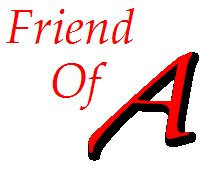A potential future colleague of mine sends me the following note:
"Hi Scott, my name is D_____ and I am a credential student at CSU Fresno. I came across your blog and saw that you are a science teacher and thought you would be a good person to ask a couple of questions for an assignment.
I was wondering if you would share with me what your opinion(s) are regarding California State Standards in high school education? Are they enough? Too much or just right? We started talking about the NCLB. I'm not sure how long you've been teaching but if you have been teaching before this law went into effect, what kind of an impact did it have on the classroom and students?
I am wanting to teach sciences at high school level as well, so I thought it would be nice to get some input from a science teacher.
Thanks for your time and have a good day.
Thanks for the question, D! The answer is complicated, so before I go into what I think, here's a link to a PDF file of the actual State Standards, so people can see for themselves what we're talking about. I think I'm a good person to ask, because I'm one of the few teachers in the state who have in fact taught all four of the Standards-based secondary science courses : Biology, Chemistry, Earth Science and Physics.
The first thing I should say is that California's Standards are in general both more comprehensive and detailed than those of other states. Their coverage of evolution in the Biology standards is excellent, for example, and you can get a detailed comparison of state standards across the nation here. While I do feel that in some particular areas the standards are too aggressive, that is not the main bugaboo. The big problem lies in the implementation of the Standards at the district level, which in turn is increasingly driven by the way that NCLB highjacks the state assessment process. In other words, while I have some problems with the Standards, I have a bigger problem with what government (federal, state, local) does with them. The more difficult Standards to teach would not be anywhere as problematic if 'best practice' was not so consistently defined in arbitrary and unrealistic terms.
For example, in Fresno Unified instructors have been increasingly placed under pressure to follow the same district-wide script at the same pace without regard to what is in the best interests of any particular cohort of students. Part of the art of teaching, and something that tends to come only with experience, is determining when to modify the pace of instruction. Interestingly enough, Fresno Unified's policy actually runs counter to the philosophy of the state's Science Teaching Framework, which remarks:
"At the high school level, the Science Content Standards document does not prescribe a single high school curriculum. To allow LEA's and teachers flexibility, the standards for grades 9-12 are organized as content strands. There is no mandate that a particular content strand be completed in a particular grade." (Chapter 1, Introduction to the Framework, pg. 10)"
Isn't that interesting, that what is coming down as 'best practice' at the district level ('one-size-fits-all instruction') is not quite in-sync with the Framework? It's not really that surprising, since the same groups didn't produce them, and the present Content Standards were pushed through over vigorous objections in a highly-politicized environment. I can say in confidence that I've talked to two academics who worked on the last Framework, and that these folks take an extremely dim view of some of the Content Standards. One of them took great exception to a remark I made that confused the Framework with the Standards: he was proud of his work on the former, whereas he felt that the latter were deeply flawed.
Before I go, there is a more sinister problem at work, and that is NCLB. The surprising fact is that NCLB has no provision mandating science performance in the elementary ranks. Thus, there is no incentive for the state or the districts to assess science performance. But there is a very strong incentive to make sure reading and math skills are on-target. So what happens in the elementary school ranks? Instructional time that used to be devoted to science has been abandoned for more reading and math skill rehearsal. As this article by Natalie Asimov asserts, science in the lower levels is in danger of 'extinction.'
That means that the Content Standards for science at K-6 are not being addressed. There is no penalty for doing poorly in science in the lower levels. But there sure is hell to pay if our science scores are low in the high school ranks! Clearly, this is a disaster in the making. This is not an intended consequence, perhaps, of NCLB as is written, but it is an extremely clear example of how the federal tail isn't just wagging the dog of local education, it's being used to rip the dog's heart out.
5/24/2008
WHAT DO I THINK ABOUT THE STATE STANDARDS?
Posted by
Scott Hatfield . . . .
at
2:14 PM
![]()
Labels: science education
Subscribe to:
Post Comments (Atom)




No comments:
Post a Comment